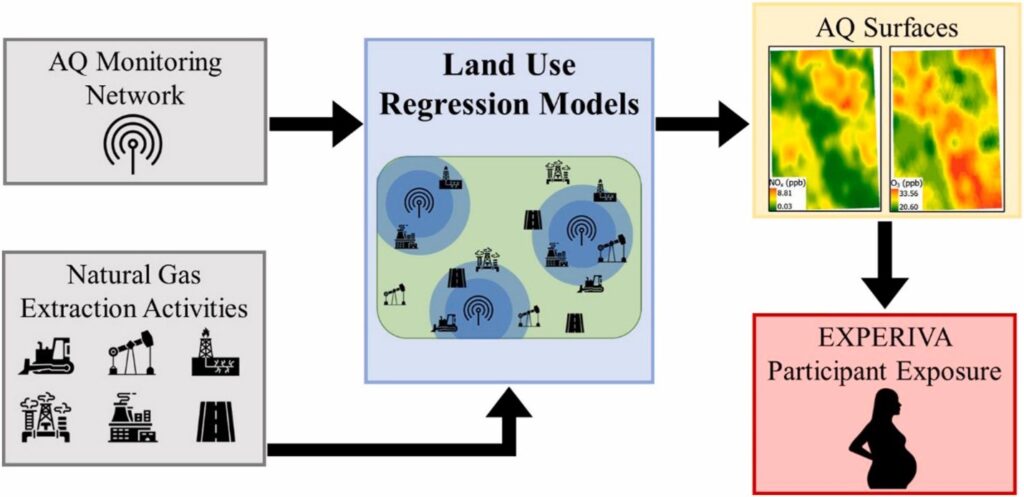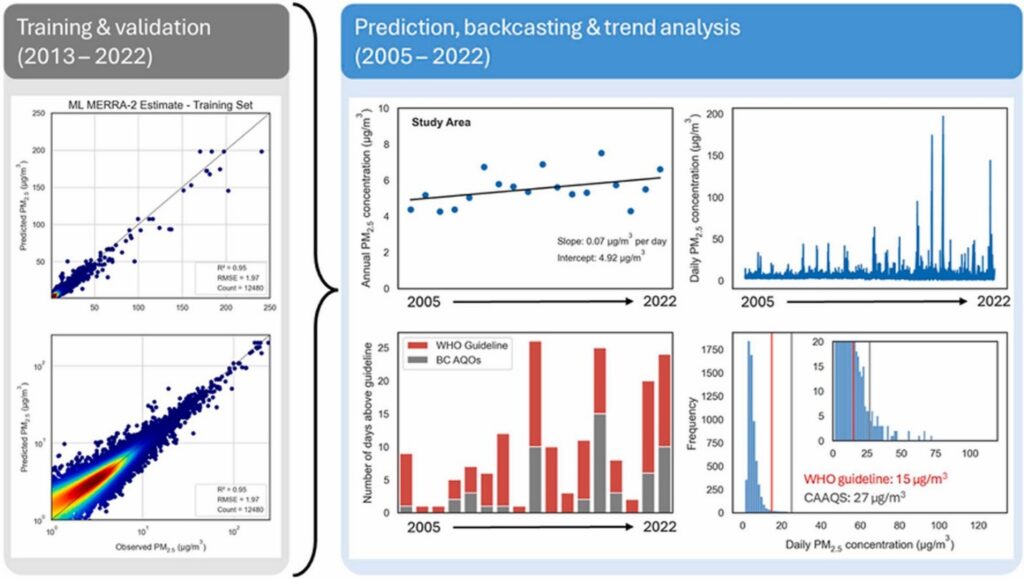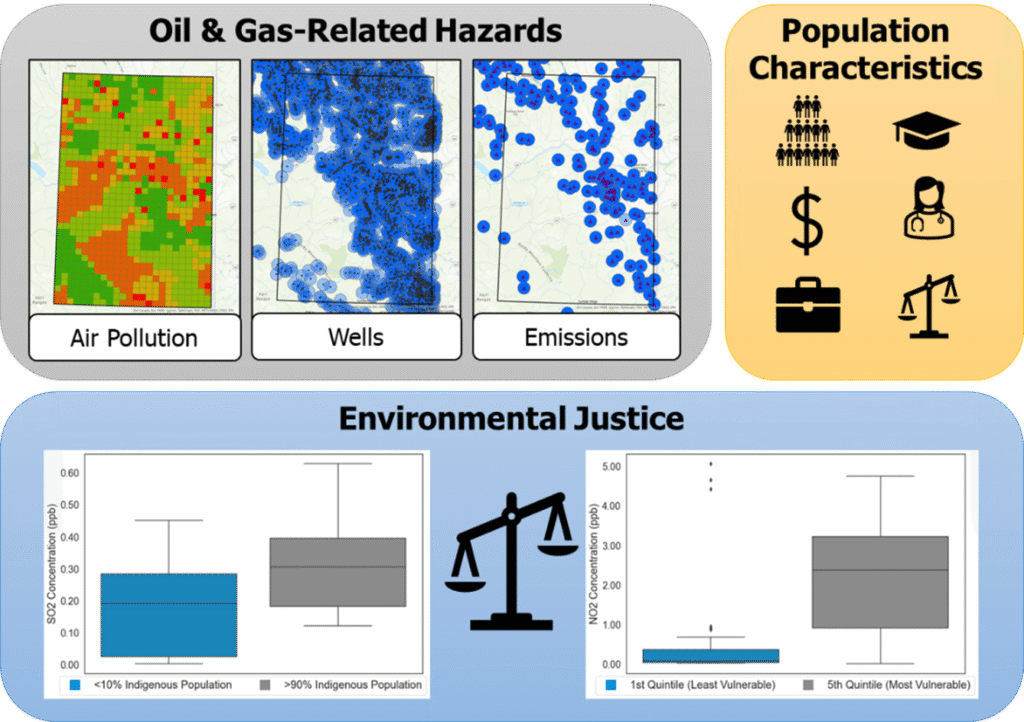Modelling of Air Quality in a Rural Area
of Unconventional Oil and Gas Development
for Health and Justice
Modelling of Air Quality in a Rural Area of Unconventional Oil and Gas Development for Health and Justice
Background
- Canada is a top producer of natural gas, with a large amount coming from the Montney Shale Gas Play in northeastern British Columbia.
- Extraction of natural gas can impact air, water and soil quality, leading to negative human health outcomes.
- Due to limited air quality monitoring in rural BC, additional techniques are needed to explore connections between unconventional oil and gas extraction, air quality, and health.
Objectives
- Develop novel methods to assess current and historical exposures to air pollution in a region experiencing rapid unconventional oil and gas development with sparse air quality monitoring.
- Assess the environmental justice implications of unconventional oil and gas development in a rural area of Western Canada.
Project #1: Modelling spatial & temporal variability of air pollution in an area of unconventional natural gas operations

Key Findings
- We were able to harness the available air quality data to build models capable of predicting at unmeasured locations using oil and gas activity data to explain the variations in concentration.
- The models were used to predict concentrations of 12 different gases and particles at the home location of health study participants and across the study area.
- Minimal monitoring of pollutants with strong associations to fracking activities & several health impacts, such as BTEX compounds, highlighted the need for additional monitoring of these species closer to areas of residence.
Citation: Please refer to the Environmental Pollution paper “Modelling Spatial & temporal variability of air pollution in an area of unconventional natural gas operations” for more details.
Project #2: Eighteen years of daily PM2.5 predictions (2005 – 2022) for a region of Western Canada: Machine learning and satellite inputs for applications in rural health

Key Findings
- We demonstrate the application of machine learning to the satellite-based estimates of aerosols and meteorology to estimate daily PM2.5 at a spatial and temporal resolution relevant for ongoing health studies.
- Our model was trained and validated on available air quality monitoring data from 2013 to 2022 and then used to predict and backcast concentrations from 2005-2022.
- We find that an increasing number of days are exceeding daily health guidelines, and these exceedances tend to occur during wildfire season.
Citation: Please refer to the Atmospheric Environment paper “Eighteen years of daily PM2.5 predictions (2005–2022) for a region of western Canada: Machine learning and satellite inputs for applications in rural health” for more details.
Project #3: Inequity of exposure to unconventional natural gas development in northeastern British Columbia, Canada – an environmental justice analysis

Key Findings
- We find higher levels of modelled air pollution concentrations in areas with higher proportions of Indigenous population.
- We find that as an area’s socio-economic vulnerability increases, modelled concentrations of air pollutants, some facility emissions and counts of active hydraulically fractured wells also increase.
- The study develops a composite index of socioeconomic vulnerability that highlights rural deprivation. We also demonstrate different ways of assessing exposure when conducting environmental justice analysis.
Citation: Please refer to the Environmental Science & Technology paper “Inequity of Exposure to Unconventional Natural Gas Development in Northeastern British Columbia, Canada ─ An Environmental Justice Analysis” for more details.